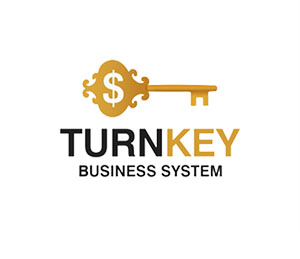
Portfolio Policy for Active Investors
Active investing is a dynamic and hands-on approach to managing investments, where the goal is to outperform the market by making strategic buying and selling decisions. Unlike passive investors, who aim to match market returns, active investors rely on research, analysis, and market timing to achieve superior results.
However, active investing requires a well-defined portfolio policy to navigate the complexities of the market effectively. This article explores the key components of portfolio policy for active investors, including goal setting, asset allocation, research strategies, risk management, and performance evaluation.
By understanding these principles, active investors can enhance their chances of success while minimizing risks.
However, active investing requires a well-defined portfolio policy to navigate the complexities of the market effectively. This article explores the key components of portfolio policy for active investors, including goal setting, asset allocation, research strategies, risk management, and performance evaluation.
By understanding these principles, active investors can enhance their chances of success while minimizing risks.

Portfolio Policy for Active Investors
What is Active Investing?
Active investing involves making deliberate investment decisions to capitalize on market opportunities. Active investors analyze individual stocks, bonds, or other assets, seeking undervalued or high-growth opportunities that can deliver above-average returns. This approach requires continuous monitoring of the market, frequent trading, and a deep understanding of financial instruments.Key characteristics of active investing include:
Market Timing: Active investors aim to buy low and sell high by predicting market movements.
Research-Driven Decisions: They rely on fundamental and technical analysis to identify opportunities.
Higher Costs: Frequent trading and research lead to higher transaction fees and management costs.
Potential for Higher Returns: Successful active investors can outperform the market, but this comes with increased risk.
Key Components of Portfolio Policy for Active Investors
To succeed as an active investor, you need a clear and disciplined portfolio policy. Here are the essential elements to consider:1. Define Your Goals and Risk Tolerance
Before building a portfolio, active investors must define their financial goals and assess their risk tolerance. Goals can range from capital appreciation and income generation to funding specific milestones like retirement or education. Risk tolerance depends on your ability to withstand market volatility and potential losses.
Short-Term Goals: If you’re focused on short-term gains, you may prioritize high-growth assets like small-cap stocks or emerging markets.
Long-Term Goals: For long-term objectives, a balanced mix of growth and income-generating assets may be more appropriate.
Risk Tolerance: Aggressive investors may allocate more to equities, while conservative investors may prefer bonds or dividend-paying stocks.
2. Asset Allocation and Diversification
Asset allocation is the foundation of any investment strategy. For active investors, it’s crucial to strike a balance between growth and stability.
Equities: Stocks offer high growth potential but come with volatility. Active investors often focus on individual stocks or sectors they believe will outperform.
Fixed Income: Bonds provide stability and income, reducing overall portfolio risk.
Alternative Investments: Assets like real estate, commodities, or hedge funds can add diversification and reduce correlation with traditional markets.
Diversification is equally important. While active investors may concentrate on specific opportunities, spreading investments across sectors, geographies, and asset classes helps mitigate risk.
3. Research and Analysis
Active investing relies heavily on research and analysis. There are two primary approaches:
Fundamental Analysis: This involves evaluating a company’s financial health, management, competitive position, and growth prospects. Metrics like earnings per share (EPS), price-to-earnings (P/E) ratio, and debt levels are commonly used.
Technical Analysis: This focuses on price patterns, trends, and trading volumes to predict future movements. Tools like moving averages, support and resistance levels, and chart patterns are essential for technical analysts.
Successful active investors often combine both approaches to make informed decisions.
4. Active Trading Strategies
Active investors employ various trading strategies to capitalize on market opportunities. Some popular strategies include:
Value Investing: Buying undervalued stocks with strong fundamentals and holding them until they reach their intrinsic value.
Growth Investing: Focusing on companies with high growth potential, even if they are currently overvalued.
Momentum Trading: Capitalizing on trends by buying assets that are rising and selling those that are falling.
Swing Trading: Holding positions for days or weeks to profit from short-term price movements.
Arbitrage: Exploiting price differences between markets or assets for risk-free profits.
5. Risk Management
Active investing involves higher risks, making risk management a critical component of portfolio policy. Key risk management techniques include:
Position Sizing: Limit the amount invested in any single asset to avoid excessive exposure.
Stop-Loss Orders: Set predefined levels to sell an asset if it drops below a certain price, limiting losses.
Hedging: Use derivatives like options or futures to protect against adverse price movements.
Regular Monitoring: Continuously track your portfolio and adjust positions as needed.
6. Performance Evaluation
Active investors must regularly evaluate their portfolio’s performance to ensure it aligns with their goals. Key metrics to consider include:
Return on Investment (ROI): Measure the profitability of your investments.
Risk-Adjusted Returns: Assess returns relative to the risks taken, using metrics like the Sharpe ratio.
Benchmark Comparison: Compare your portfolio’s performance to relevant benchmarks, such as the S&P 500 or sector-specific indices.
Review and Adjust: Identify underperforming assets and make necessary adjustments to improve returns.
Challenges of Active Investing
While active investing offers the potential for higher returns, it comes with several challenges:Time-Consuming: Active investing requires significant time and effort for research, analysis, and monitoring.
Higher Costs: Frequent trading leads to higher transaction fees, taxes, and management costs.
Emotional Decision-Making: Market volatility can trigger impulsive decisions, leading to poor outcomes.
Difficulty in Consistently Outperforming: Even professional fund managers often struggle to beat the market consistently.
Tips for Successful Active Investing
To overcome these challenges and succeed as an active investor, consider the following tips:Stay Disciplined: Stick to your strategy and avoid emotional decisions.
Keep Learning: Continuously educate yourself about markets, industries, and investment strategies.
Leverage Technology: Use tools like trading platforms, analytics software, and news aggregators to stay informed.
Start Small: Begin with a small portion of your portfolio and gradually increase your exposure as you gain experience.
Seek Professional Advice: Consult financial advisors or mentors to refine your strategy.
Conclusion: Is Active Investing Right for You?
Active investing can be highly rewarding for those willing to put in the time, effort, and research required to outperform the market. However, it’s not suitable for everyone. If you have the knowledge, discipline, and risk tolerance, active investing can help you achieve your financial goals. On the other hand, if you prefer a hands-off approach, passive investing may be a better fit.Regardless of your choice, the key to success lies in having a clear portfolio policy, staying disciplined, and continuously improving your skills.
By following the principles outlined in this article, you can navigate the complexities of active investing and build a portfolio that delivers strong, consistent returns. Remember, the journey to financial success is a marathon, not a sprint—so stay focused, stay informed, and stay committed to your goals.









Report
My comments